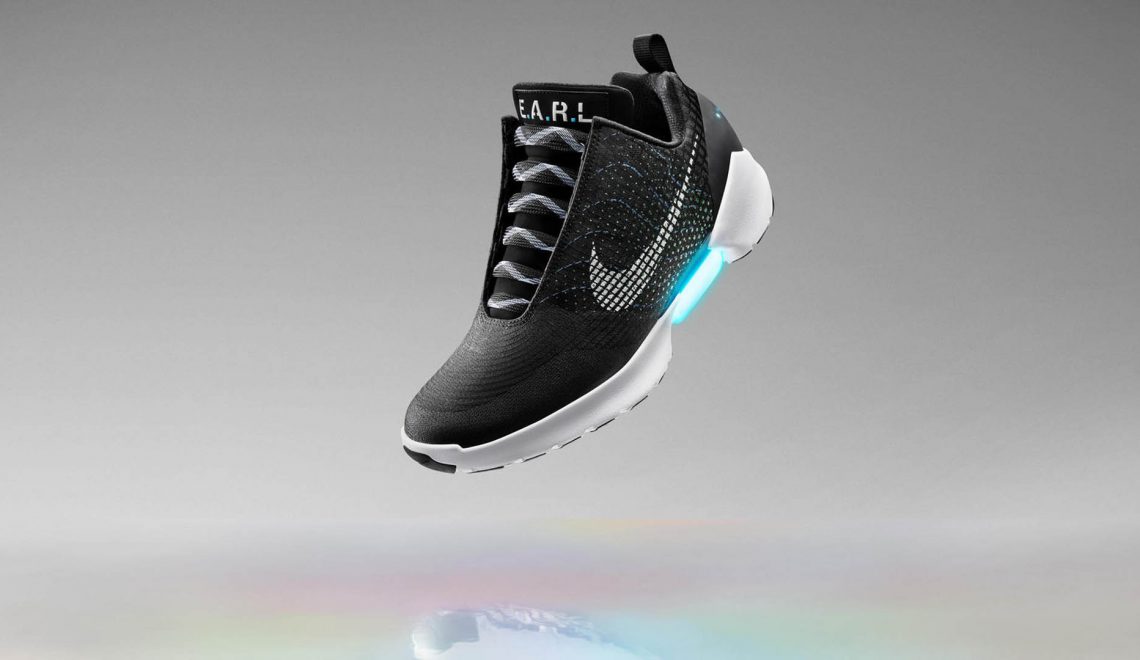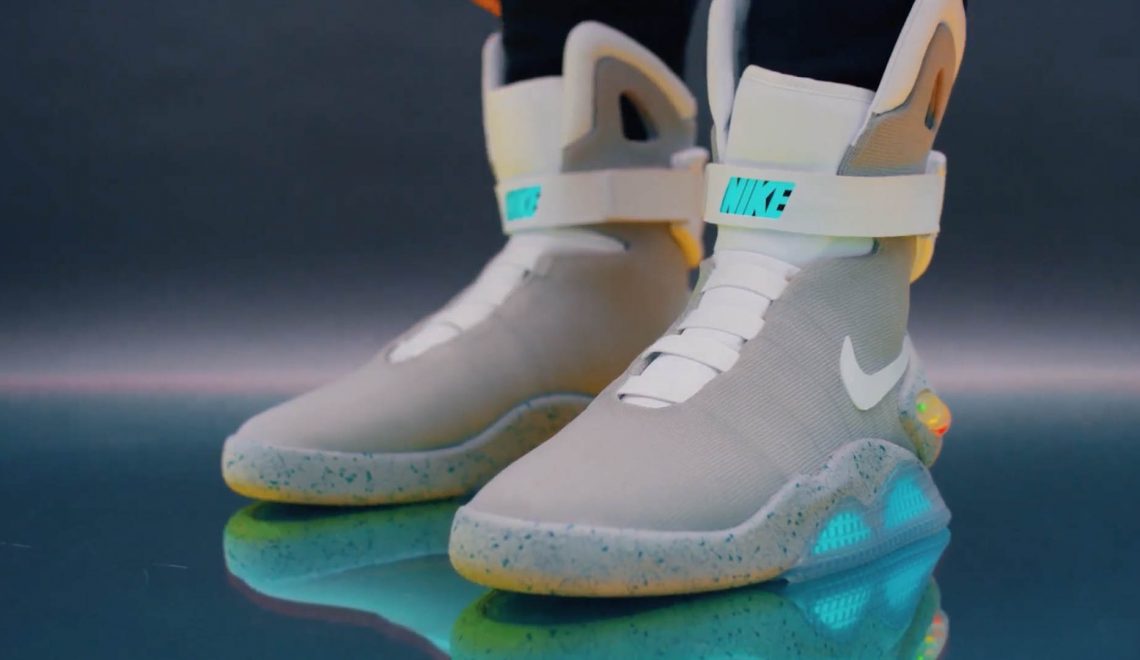There was a lot of excitement last October when Nike unveiled that it was actually going to release the self-tying Nike Mag from Back To The Future 2. Unfortunately the sneakers, which launch next month, will be very limited in quantity and only available via auction (which translates to prices possibly north of $10,000). That means the dream of “futuristic” self-lacing shoes is still only a dream for most of us…that is until last night when Nike announced the HyperAdapt 1.0. The HyperAdapt 1.0 will be the first mass produced self-tying sneaker. When you slide the shoe on and press your heel down, the laces engage and automatically tighten around your foot. Small buttons on the side of the shoe allow you to make micro adjustments to the tightness, either loosening or tightening the laces as needed. If your feet swell when you run, no need to stop, re-adjust, and re-tie your shoes, just tap the loosen button. Eventually Nike envisions shoes that will automatically sense when they need to adjust their fit and make the necessary tweaks. If you liked the bling from the Nike Mags, you can rest soundly because the new HyperAdapt also has LED lights. The HyperAdapt 1.0 is expected to launch in time for the holidays and we are guessing it will be on a lot of wish lists (we cannot wait to get our hands on a pair)! Pricing has not be announced, but no matter what it will cost less than a pair of Mags would set you back. When the shoes launch, they will be available exclusively through the Nike+ app. Speaking of which, the app is about to receive a shopping oriented makeover in the coming months [the Nike+ running app needs lots of updates but shopping was not one of them, just restore our map data you lost last summer and fall Nike!].
Born from the research behind the Nike Mag, the HyperAdapt actually represents a larger initiative for Nike. The company has used the self-lacing technology as an entry point for fitting complicated electronics and mechanisms into an useable sneaker. The guideline was that the technology had to in-no-way impede on the usability of the footwear; it had to remain comfortable, flexible, cushioning, and supportive. In the future Nike plans to make sneakers that are aware of the wearer’s body and what they are doing. The result will be shoes that automatically adapt to the the needs of the person wearing them. We cannot wait to see how this technology evolves!





